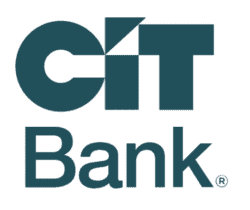One of the best ways to reach your money goals is to follow a monthly budget. While people often believe budgeting is restrictive, it can create freedom when done wisely.
The key is using a simple formula. For example, Dave Ramsey provides a roadmap to being successful with your money through his baby steps.
He prescribes a similar methodology with his views on recommended budget percentages by category. Everyone’s situation is unique, but his ideas provide an excellent guide to achieving financial stability.
Here’s how to apply it to your life.
Table of Contents
What are the Recommended Budget Percentages for Each Category?
Ramsey suggests 11 categories for a household budget. These include:
| Category | Percentage of Net Income |
|---|---|
| Giving | 10% |
| Saving | 10% |
| Food | 10-15% |
| Utilities | 5-10% |
| Housing | 25-35% |
| Transportation | 10% |
| Insurance | 10-20% |
| Health | 5-10% |
| Recreation | 5-10% |
| Personal | 5-10% |
| Miscellaneous | 5-10% |
Remember that each situation is different. You may want to include additional categories or remove several if they don’t fit your goals.
It’s ok to add or remove categories and adjust your budget percentages depending on your unique needs. Read our guide on Dave Ramsey’s baby steps if you’re struggling with your finances and want to get on track.
Budget Categories Explained
Making a budget is simple when you follow the suggested categories, but you may not know what to include in each section.
Here is what you should include for each budget category.
Giving: You can give ten percent of your monthly income to a cause that’s important to you. This may include anything from your place of worship to an organization that you want to support.
Saving: Ramsey recommends saving ten percent of your income in a retirement account or 401(k). Read our guide on the best Roth IRA providers if you need to start saving for retirement.
Food: This should include what you buy at the grocery store. It should also include dining out. Basically, if it’s something your family buys to consume, it should go in this budget category.
Utilities: This includes your cell phone, cable, internet, electricity, and gas. Utilities are easy to overspend on, so look for ways to save money.
Housing: This is for your rent or mortgage payment. If you pay property tax, HOA dues, or something else that is housing-related, it should go here.
Home repair costs and maintenance expenses also fall into this category.
Regardless if you rent or own, you must determine how much is ok to spend and not negatively impact your budget. Read our guide on how much you should spend on rent to learn more, assuming you don’t own your home.
Transportation: Regardless of whether you take the bus or drive a car, it goes in this category. Don’t forget to include car maintenance expenses, gas, and auto insurance costs.
Insurance: Car and home insurance go in their respective categories, but this is for disability, health, and life insurance. This also includes any other kind of coverage you might need.
Health: Anything you spend for health-related needs goes here. This can include co-pays, medication, or visiting the dentist.
Recreation: We all need fun money, and this is where fun fits in. Anything you do for entertainment, from going to the movies, seeing a sporting event, or attending a concert, should go here.
Personal: Expenses for personal care, like clothing or haircuts, go here.
Miscellaneous: This is a catch-all category for things that don’t fit well in another budget category.
Using Budget Categories to Save Money
While simple to follow, there’s a lot that goes into the recommended budget percentages. To stretch your spending, you want to find ways to lower your spending.
For instance, you may find that you’re spending too much on transportation or utilities. Reducing costs in those areas frees up funds to apply to other categories.
You want to assess your needs in all areas to streamline spending.
Read our guide on over three dozen ways to save more money every month to increase savings.
If you manage follow just a few of the tips you might be able to save $500 per month with a little effort.
How Does Debt Fit in Your Budget Categories?
Debt is not found in Ramsey’s plan. The reason for that is simple. He suggests you pay off debt as quickly as possible by paying as much as you can to your personal debt.
This includes the following:
- High-interest consumer debt
- Student loan debt
- Car loans
Anything that is not a mortgage should be paid off as soon as possible. Keep in mind that this may require you to spend less in any budget category that you have the ability to make cutbacks in.
Paying off your debt helps you avoid financial trouble and living paycheck-to-paycheck.
How to Pay Off Debt
There are two main methods to kill debt, including:
- The debt snowball (which Ramsey recommends)
- The debt avalanche
Here is how the debt snowball works.
| Step | Action |
|---|---|
| 1 | List your debts by balance size |
| 2 | Make extra payments on the smallest balance |
| 3 | Pay off the smallest balance |
| 4 | Apply extra payments to the next smallest balance |
| 5 | Repeat the process until you become debt-free |
Here is how the debt avalanche works.
| Step | Action |
|---|---|
| 1 | List your debts by balance size |
| 2 | Make extra payments on the higher interest rate debt |
| 3 | Pay the minimum on all other debts |
| 4 | Repeat the process until you become debt-free |
Ultimately, it doesn’t matter which method you use. What’s vital is that you pay off your debt.
SoFi is an excellent resource to help you do this. It helps you consolidate your debt into a lower-rate loan to pay back.
However, before you do that, you want to build an emergency fund of at least $1,000. Don’t stop once you reach $1,000, though.
Instead, use a savings account to pay yourself first with each paycheck you receive to grow your savings.
CIT Bank is a great option for that and has a minimum balance requirement of just $100 to start.
As you eliminate debt, you can direct those funds to the appropriate categories in concert with your financial goals.
Why Use Budget Percentages?
It can be simple to create a budget, but if you’re a novice, it could be a challenge. You see your take-home pay and might not know where to start in managing where it should all go.
This was the situation I was facing when I had $50,000 in credit card and student loan debt.
I was spending far more than the recommended ten percent on entertainment. As a result, I was saving nothing. Facing bankruptcy, I met with a credit counselor.
She walked me through the idea of using budget percentages to manage my spending. This zero-based budget acted to give every dollar a purpose and, eventually, kill debt.
If you’re facing a similar situation, read our guide on the top bankruptcy alternatives that may serve you better.
You may not have debt to conquer, but the percentages are helpful for tracking your spending, planning for large purchases, and building wealth.
How to Use Budget Percentages to Achieve Your Money Goals
It is important to remember that recommended budget percentages are merely suggestions. We all have different goals and circumstances.
You need to create your budget in a way that’s going to suit your needs. For example, saving ten percent of our family’s income is insufficient for our needs.
We strive to save 30 percent or more of our income for retirement since we want to quit working before the traditional retirement age.
As a result, we cut back in categories like housing and transportation to make that possible. We also devote more spending to travel, so we reduce expenses in recreation to fund that desire.
How to Track Your Budget as a Couple
Tackling your budget as a couple is essential to success. Your partner may have different spending triggers or might not always track spending consistently.
Instead of seeking to make one partner feel like the other is trying to restrict their freedom, work together as a team. Be honest, and work together to establish the money goals you have as a couple.
It’s best to do this with the assistance of a budget software program. There are various options you can use. Some are free, while others require a small expense.
Read our guide on the top free budgeting tools to use if you don’t want to spend money on an app.
Find one that works for you and use it together. This will help each partner feel ownership over the budget, which leads to greater success.
How to Evaluate Your Budget
Living by a budget isn’t a set it and forget it type of thing. You want to regularly revisit your money plan.
Depending on your needs, it’s best to reassess your spending at least semi-annually, if not quarterly. This helps you see what you’re actually spending in each budget category.
For example, your fixed expenses in one area may increase, requiring you to allocate more funds to it. Or, you could find that you need to create a sinking fund to manage your variable expenses like gas or food.
Analyzing your spending and expenses regularly will help make your budget more efficient.
Additionally, your goals may change from the beginning of the year. This means you might need to adjust spending.
Regardless of your situation, it’s best to use alternatives to Mint.com to identify your spending habits. Look at what you’re spending, what you budgeted, and areas that need attention.
A tool like Rocket Money can help with this. It offers a free budgeting app you can use to analyze all transactions and bills to find areas of opportunity.
Read our Rocket Money review to learn more.
Remember, each situation is different. You want to align your budget with your specific goals to increase your probability of success and give you more ownership over your finances.
Bottom Line
No budget is the same, and your budget percentages will change over time. The key is to get started, then analyze what works best for your lifestyle and goals over time.
Budgeting is often seen as restrictive or burdensome by novices. It doesn’t have to be that way. By following a simple methodology, you’ll have greater freedom and can build wealth.
What’s one area you really want to cut back on in your budget?
*Personal Loan Disclaimer: Fixed rates from 8.99% APR to 25.81% APR reflect the 0.25% autopay interest rate discount and a 0.25% direct deposit interest rate discount. SoFi rate ranges are current as of 05/19/23 and are subject to change without notice. Not all applicants qualify for the lowest rate. See Personal Loan eligibility details. Lowest rates reserved for the most creditworthy borrowers. Your actual rate will be within the range of rates listed and will depend on the term you select, evaluation of your creditworthiness, income, and a variety of other factors. See APR examples and terms.
Loan amounts range from $5,000– $100,000. The APR is the cost of credit as a yearly rate and reflects both your interest rate and an origination fee of 0%-6%, which will be deducted from any loan proceeds you receive.
Autopay: The SoFi 0.25% autopay interest rate reduction requires you to agree to make monthly principal and interest payments by an automatic monthly deduction from a savings or checking account. The benefit will discontinue and be lost for periods in which you do not pay by automatic deduction from a savings or checking account. Autopay is not required to receive a loan from SoFi.
Direct Deposit Discount: To be eligible to potentially receive an additional (0.25%) interest rate reduction for setting up direct deposit with a SoFi Checking and Savings account offered by SoFi Bank, N.A. or eligible cash management account offered by SoFi Securities, LLC (“Direct Deposit Account”), you must have an open Direct Deposit Account within 30 days of the funding of your Loan. Once eligible, you will receive this discount during periods in which you have enabled payroll direct deposits of at least $1,000/month to a Direct Deposit Account in accordance with SoFi’s reasonable procedures and requirements to be determined at SoFi’s sole discretion. This discount will be lost during periods in which SoFi determines you have turned off direct deposits to your Direct Deposit Account. You are not required to enroll in direct deposits to receive a Loan.
The following payment example depicts the APR, monthly payment and total payments made during the life of a personal loan with a single disbursement. All loan rates below are shown with the autopay discount (0.25%) and direct deposit discount (0.25%). The monthly payment for a $30,000 loan with a 60-month term and a fixed annual percentage rate (APR) between 12.95% – 25.03% would be $681.82 – $881.07 in monthly payments, with total payments between $40,909.47 – $52,864.05. Your actual interest rate may be different than the loan interest rates in these examples and will be based on term of loan, your financial history, and other factors, including your cosigner’s (if any) financial history. Lowest rates reserved for the most creditworthy borrowers. See SoFi.com/eligibility for details.
I’m John Schmoll, a former stockbroker, MBA-grad, published finance writer, and founder of Frugal Rules.
As a veteran of the financial services industry, I’ve worked as a mutual fund administrator, banker, and stockbroker and was Series 7 and 63-licensed, but I left all that behind in 2012 to help people learn how to manage their money.
My goal is to help you gain the knowledge you need to become financially independent with personally-tested financial tools and money-saving solutions.







Leave a Reply